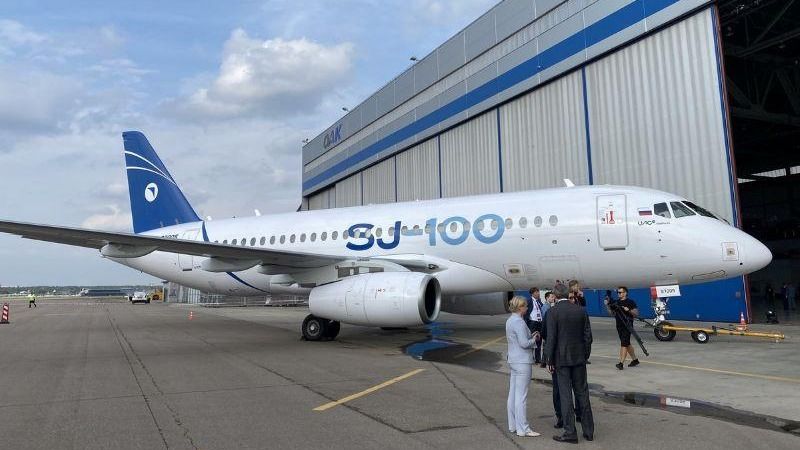Summary
- Comprehensive flight testing for the new SJ100 with the Russian PD-8 engine will involve up to 200 test flights and is scheduled for next year.
- The testing program for the PD-8 engine has experienced delays. The engine testing on the aircraft is planned for 2024.
- The delivery of the domestically produced SSJ100 aircraft is set to begin in 2024, with 22 aircraft currently at various stages of readiness. Adjustments to the timeline within a few months are not considered critical.
2024 looks to be a major year for Russia’s United Aircraft Corporation (UAC). CEO of the company, Yuri Slyusar, stated on November 13th during the Dubai Airshow that comprehensive flight testing for the new domestically-powered SJ100 is scheduled to occur next year. The development of this version is yet another step in Russia’s decreasing dependence on Western components and technology.
2023 target missed
On October 31st, Sergei Chemezov, President of the Russian state-owned conglomerate Rostec, stated that the PD-8-powered version of the SJ100 would undergo tests in December. However, commenting on the progress of PD-8 engine testing, UAC’s Slyusar noted that the company’s initial 2023 target for certification would be missed. This delay will see things move into 2024.
“The testing program for the PD-8 engine is taking slightly longer than initially planned. The aim was to obtain certification by the end of the year, but unfortunately, it will be delayed until next year. Testing the engine on the aircraft is part of the plan for the year 2024.” -Yuri Slyusar, CEO, UAC
Photo: SuperJet International
Regarding the latest announcement during the Dubai Airshow, a spokesperson from Rostec stated that the aircraft would only be handed over to the customer when there is confidence in the safety and reliability of all systems. This particularly applies to the Russian-made PD-8 engine, which Rostec highlighted as “the most complex technical system on the new aircraft, involving the efforts of tens of thousands of people.” Rostec emphasized that meticulous work on quality would not be compromised for expediency.
Regarding the schedule, Rostec mentioned that the initial deliveries of the domestically produced (import-substituted) SJ100 aircraft are set to commence in 2024. However, the firm added that potential adjustments to the timeline should not be considered critical. At present, 22 aircraft are at various stages of readiness. Recently, at the end of September, the communications team of Rostec announced that the PD-8 engine control system of the SJ100 aircraft had successfully passed extreme high-temperature tests. Further testing is set to involve up to 200 test flights.
The ‘Russified’ SJ100
The development of the Sukhoi Superjet 100 (SSJ100) regional jet commenced in 2000 under Russia’s Sukhoi Civil Aircraft Company. It officially entered commercial operations in April 2011.
Despite its Russian origin, the SSJ100 heavily depended on foreign components, with estimates suggesting that over 50% of crucial elements were imported from the US and Europe. The ‘international’ engine, known as the PowerJet SaM146, was the result of a joint venture between France’s Snecma (Safran) and Russia’s NPO Saturn.
Photo: UAC
However, due to tightening sanctions against Russia’s aviation industry, particularly following the annexation of Crimea and Donbas in 2014, Sukhoi made a strategic decision to replace Western components with those designed and manufactured in Russia. This transformation involved the following changes:
- Incorporation of the PD-8 turbofan engine, which included new KRET avionics, to replace Thales-produced systems.
- A Russian-designed inertial navigation system and auxiliary power unit were also introduced to substitute for Honeywell’s equipment.
- A new Russian landing gear was introduced in place of one manufactured by France’s Safran.
- A total of approximately 40 systems and units needed replacement on the original SSJ100 aircraft.
To make a distinction between the original aircraft (SSJ100) and the import-substituted version, it was decided that the latter would be designated the SJ100.
The scheduled delivery of this import-substituted version has been delayed due to certification delays for several key components. The most critical of these is the certification for the PD-8 engines, which was initially planned for completion in 2022 but has yet to be achieved.
Source: Kyiv Post



